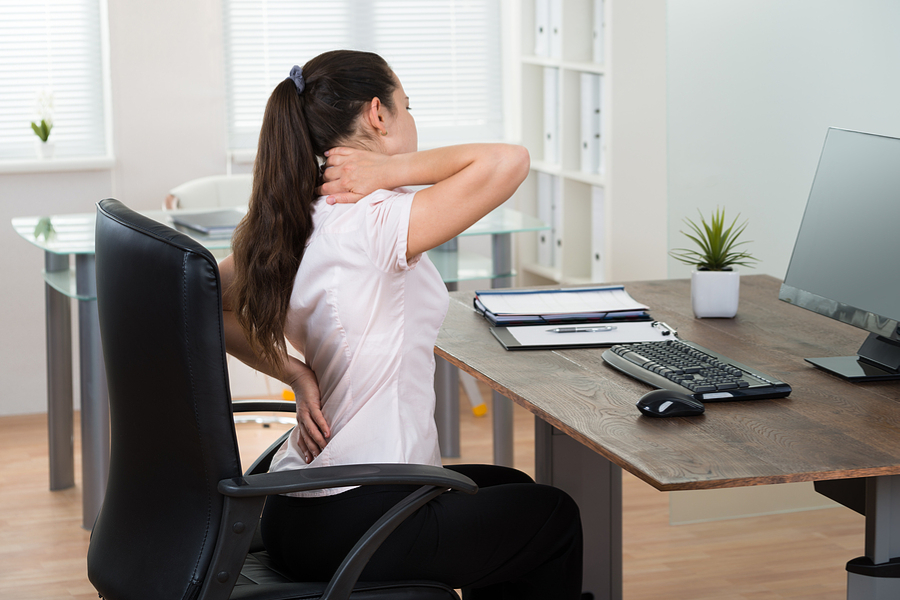by Matt Weik, BS, CSCS, CPT, CSN
A new health trend has taken social media by storm: the “office chair butt.”
No, this isn’t some sort of joke or clickbait to get you to click on the article.
Office chair butt is gaining massive traction on TikTok, and the term has sparked widespread conversation about the potential negative impacts of prolonged sitting on glute health and muscle strength.
Viral videos from creators have drawn millions of views, with users expressing concern about how desk jobs might affect their body’s muscle tone.
But is this trend merely social media hype or a legitimate health concern?
In this article, we are going to dive deeper and look at office chair butt to figure out what it is and if it’s something you should be worried about if you have a desk job.
Disclaimer: This article is for informational purposes only and is not meant to treat or diagnose any condition. It is recommended that you speak with your doctor before starting any exercise program, changing your daily nutrition, or adding any supplements to your regimen.
What is Office Chair Butt?
Office chair butt describes the physical discomfort and potential health issues that arise from spending long hours seated at a desk.
This condition stems from prolonged sitting, which can create a range of unpleasant symptoms affecting your backside and overall body mechanics.
When you’re stuck in a chair for hours on end, several problems can develop:
- Nerve compression: Sitting can put pressure on nerves in your buttocks and legs, causing uncomfortable sensations like numbness or tingling that might radiate down your legs.
- Muscle soreness: Inadequate chair support and constant pressure can lead to significant discomfort in your gluteal region, making sitting painful and uncomfortable.
- Muscle weakness: Perhaps most concerning is how extended sitting can cause your gluteal muscles to weaken and even shrink. When muscles aren’t regularly activated, they lose strength and tone, which can impact your overall physical function.
These symptoms highlight why movement and proper ergonomics are crucial for maintaining muscle health, especially for those with sedentary jobs. And here I am writing content all day in a desk chair (*gasp*).
What’s the Reason “Behind” Office Chair Butt?
Your uncomfortable desk experience isn’t just bad luck; it’s often a result of several key issues.
1. Ergonomic nightmares
Not all office chairs are created equal. Many are essentially comfort traps that set you up for discomfort:
- Cushioning fails: Imagine sitting on a board covered in thin fabric. That’s what many office chairs feel like. Inadequate padding creates painful pressure points that make your backside ache.
- Lumbar support disaster: Without proper lower back support, your spine loses its natural curve. The result? Back pain that radiates right into your buttocks, making sitting feel like a punishment.
- Adjustment limitations: One-size-fits-all chairs are a myth. If your chair can’t adjust to your body, you’ll end up in awkward, uncomfortable positions that strain your muscles.
2. The sitting trap
Long hours in a chair are basically a slow-motion health hazard:
- Blood flow: Constant sitting compresses blood vessels, creating that awful pins-and-needles feeling in your backside and legs.
- Muscle shutdown: When you sit, your glute muscles essentially go on vacation, gradually weakening and losing their strength and tone.
3. Posture problems
How you sit matters just as much as how long:
- Slouching syndrome: Collapsing into your chair might feel comfortable, but it’s putting extra pressure on your lower back and buttocks.
- The lean forward: Constantly pushing your body forward strains muscles and creates tension throughout your lower body.
5 Tips to Avoid Office Chair Butt Being a Pain in the Butt
Here are some effective tips to prevent office chair butt:
1. Movement
Sitting isn’t just uncomfortable — it’s potentially harmful. The key is consistently changing your work environment. Set reminders every 20 minutes to get up, stretch, and move. Try neck rolls, shoulder twists, or quick butt squeezes. Even two minutes of movement can help reset your body and improve circulation.
2. Strategic work scheduling
Break your workday into manageable chunks. Instead of marathon sitting sessions, create a rhythm of focused work periods followed by short breaks. Use your lunch hour for a 15-minute walk. Take phone calls standing up and transform meetings into standing opportunities.
3. Chair selection
Not all chairs are the same. An ergonomic chair isn’t a luxury; it’s a necessity. Look for chairs with adjustable height and lumbar support. Don’t worry about breaking the bank; used ergonomic chairs can be excellent, budget-friendly options that protect your body.
4. Use the stairs
It should come as no shocker that you should skip the elevator. Take stairs whenever possible. If meetings allow, stand instead of sit. These small changes accumulate, reducing the risk of muscle weakness and discomfort associated with prolonged sitting.
5. Incorporate exercise
Having regular exercise in your routine can help strengthen the gluteal muscles and enhance overall posture. Exercises such as lunges, glute bridges, and squats can be quite beneficial.
The goal is simple: keep moving, stay flexible, and listen to your body. Your backside will thank you.



